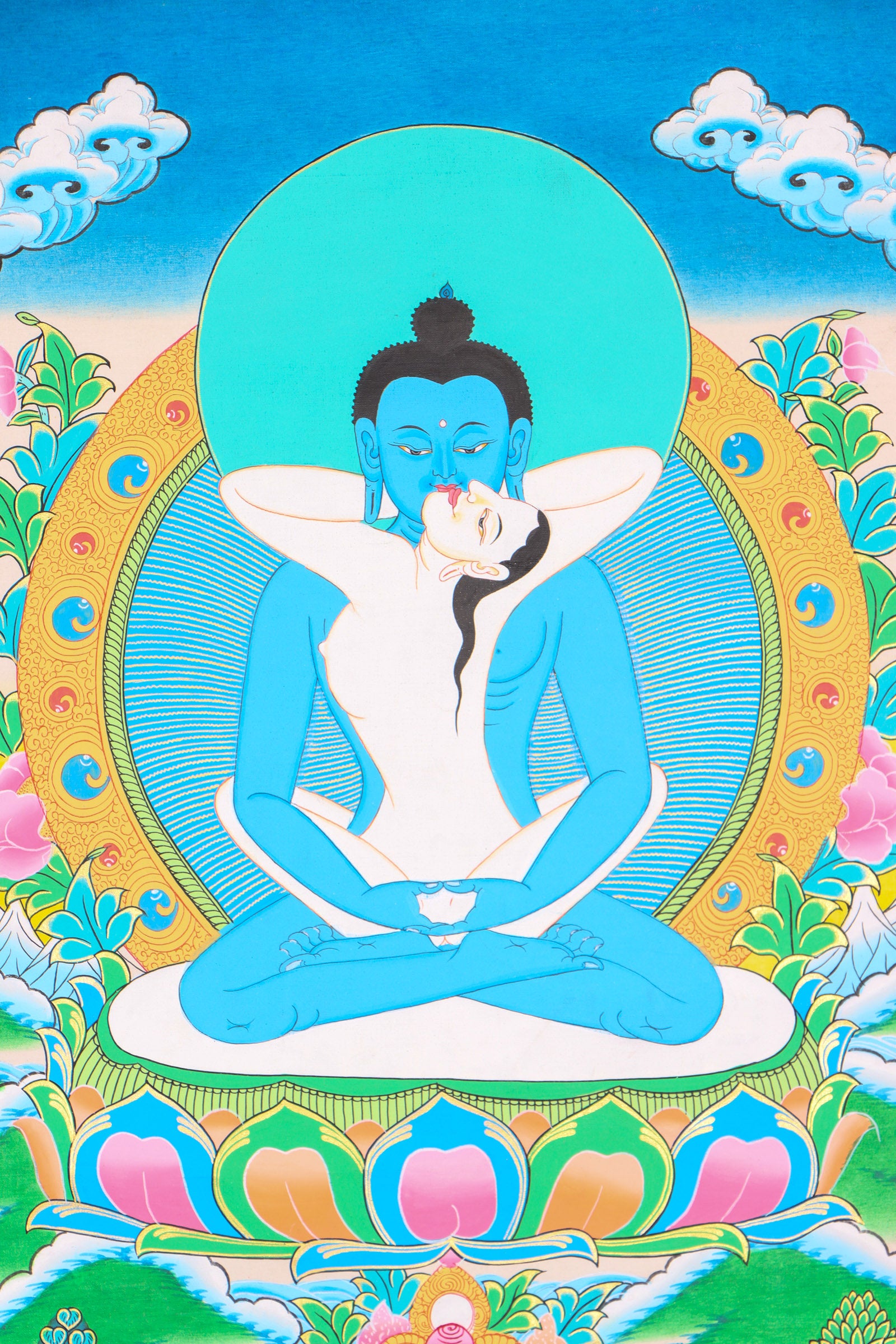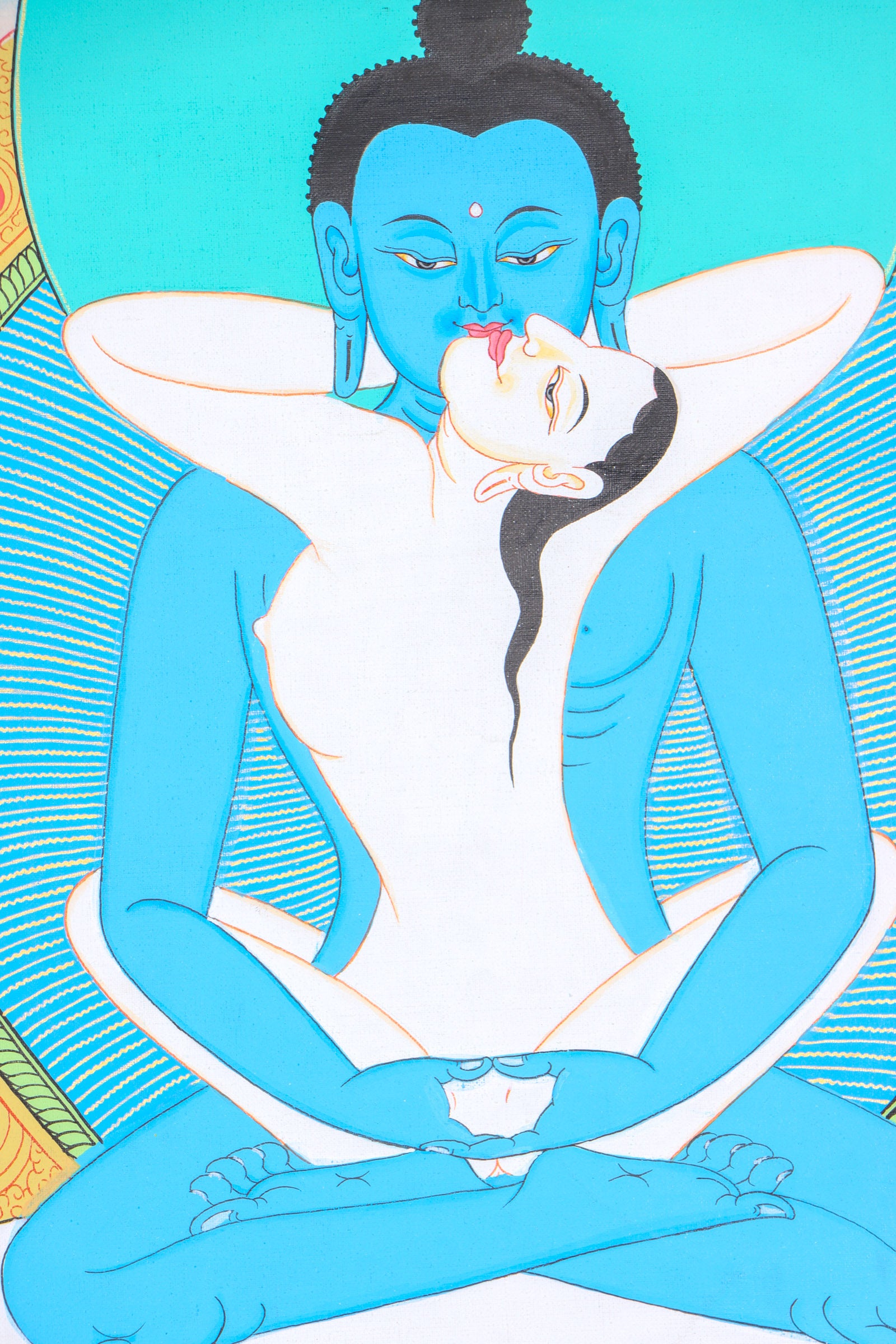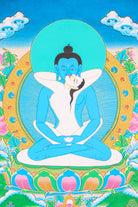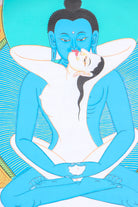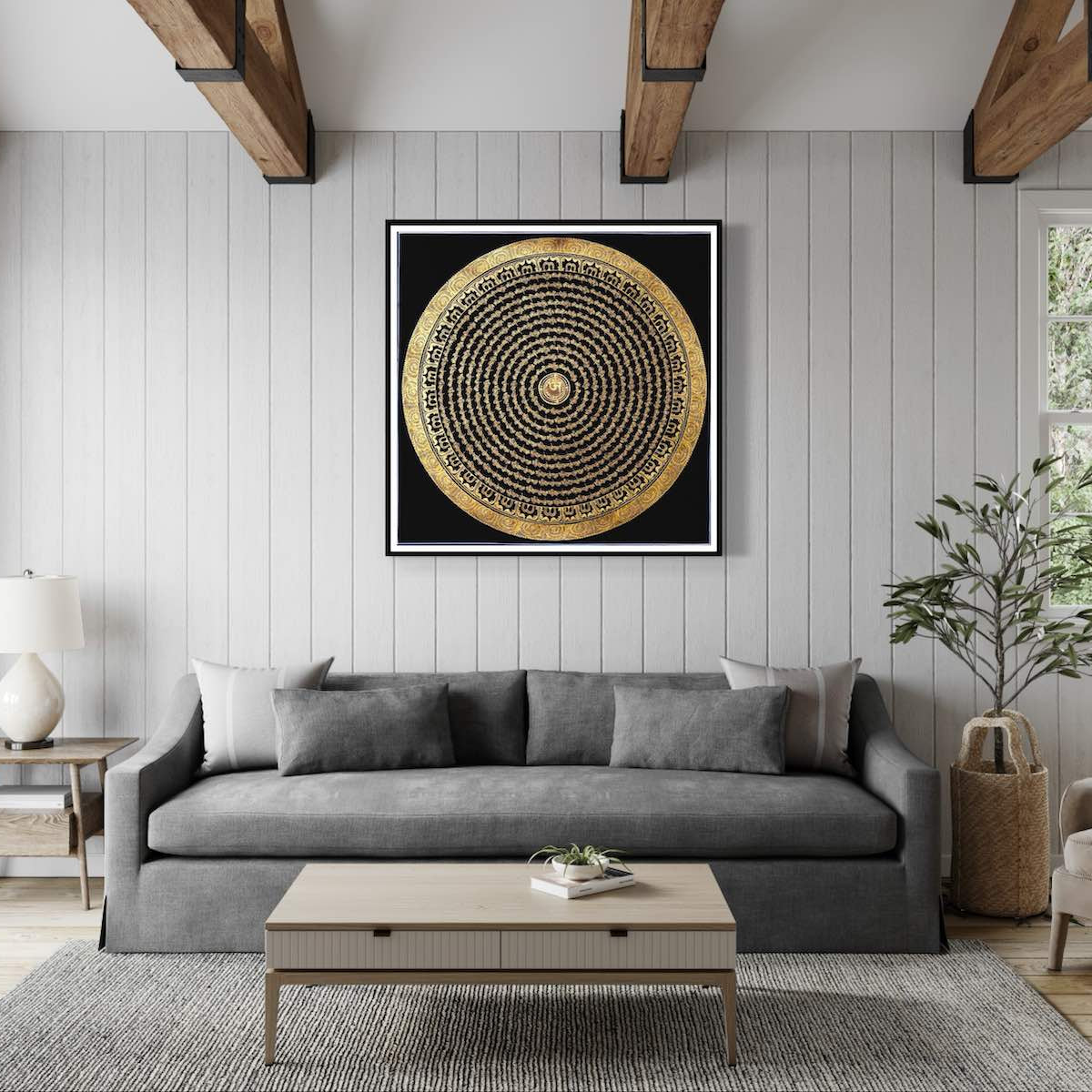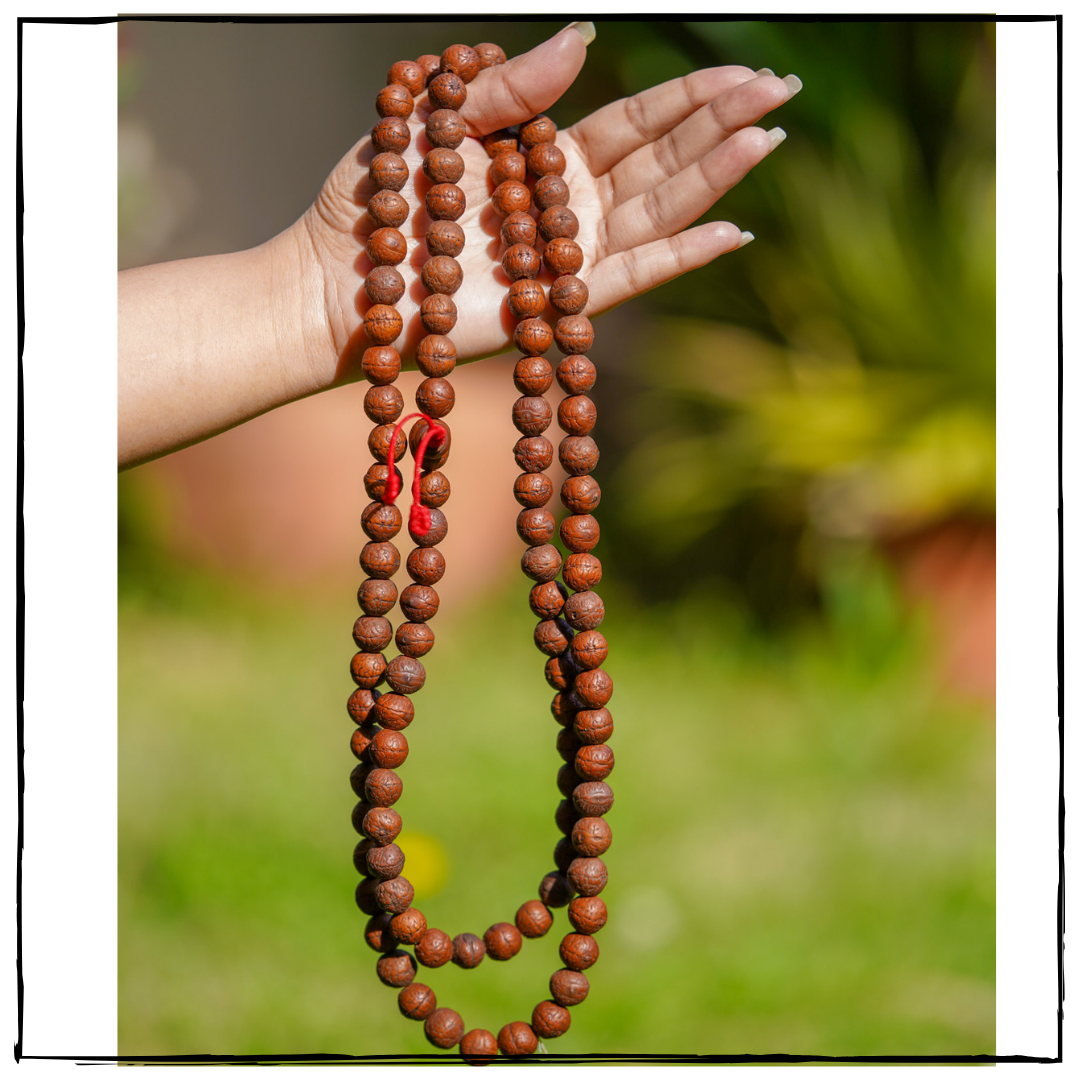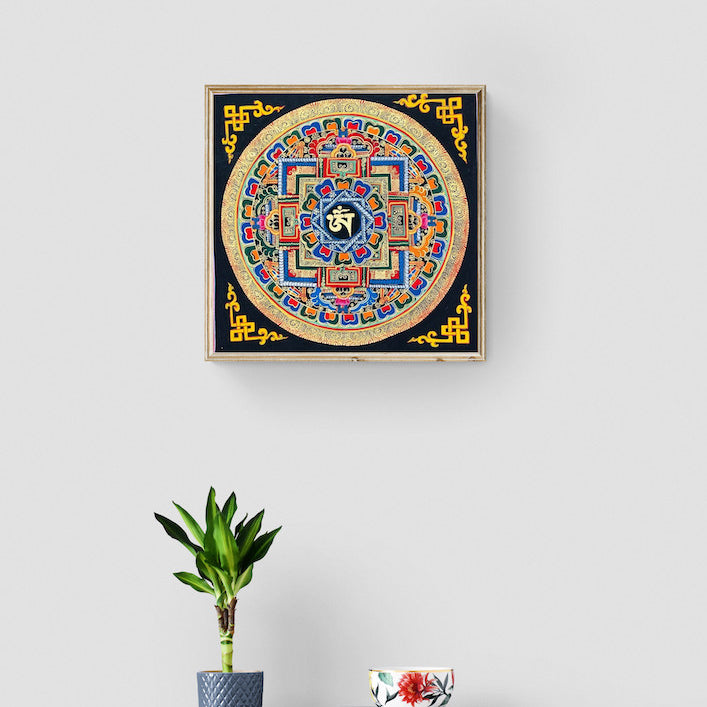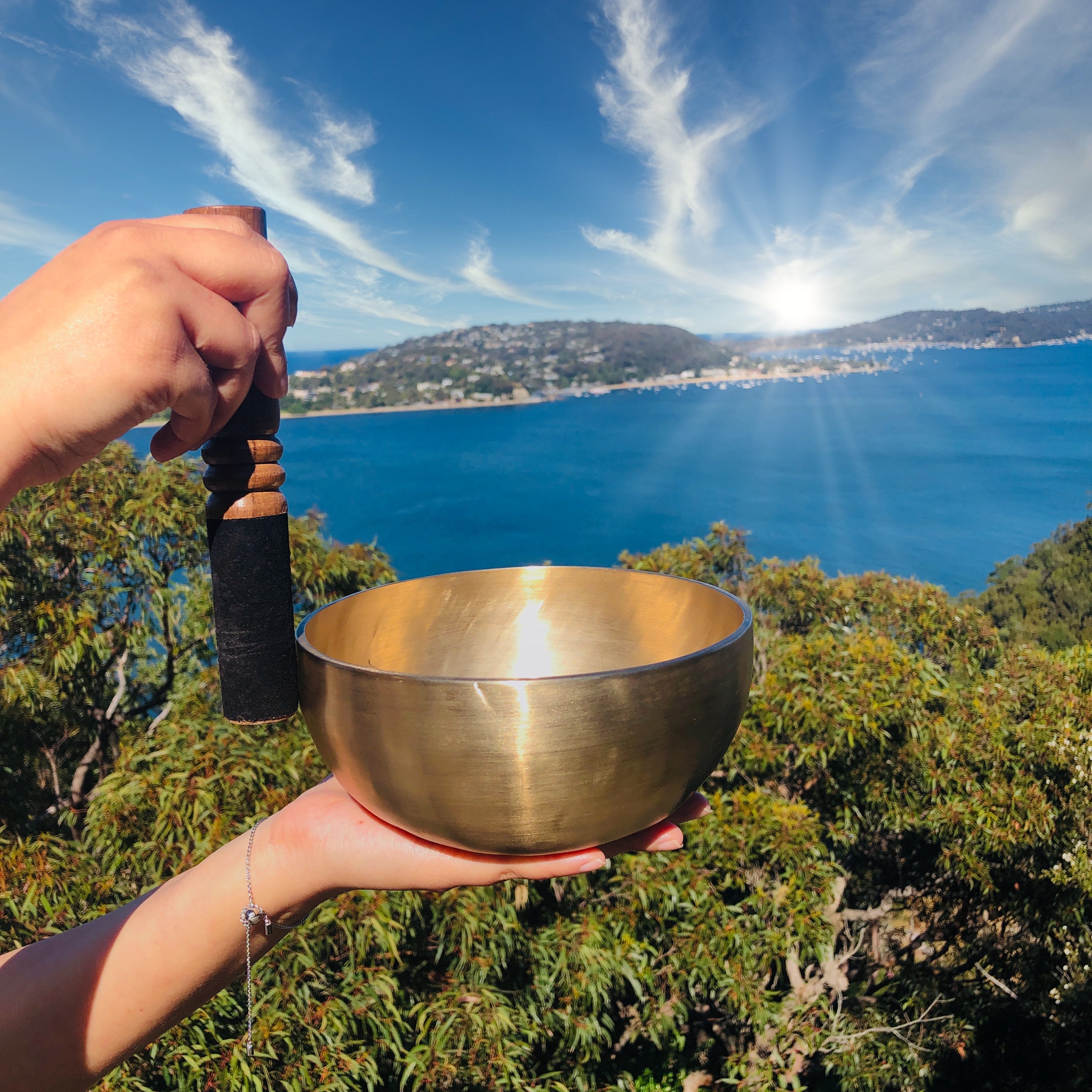Buddha Shakti Thangka Painting
Couldn't load pickup availability
Description
Thangka are Tibetan paintings utilized for religious purposes, usually acting as a focal point for meditation. The artwork featured often provides a visual aid and reference for the visualizations done in Tibetan Buddhist teachings. These works of art are often seen in Tibetan households and religious sites, regarded as sacred objects and placed above devotional altars.
The Buddha Shakti, also called Samantabhadra, is depicted embracing his consort in a Yab-Yum pose, signifying father-mother in Tibetan. The Blue tinted depiction of Buddha and his consort embodies Yab-Yum. This exquisitely crafted masterpiece of Thangka Art, created by the renowned Kathmandu Valley artisan, is of the utmost quality; its strokes and facial expressions are precisely detailed. This image may appear startling, however it holds a traditional signification in Tantric Buddhism. This pose symbolizes the necessary merging of Upaya (the active force; masculine) and Prajna (wisdom; feminine) which allows the false dichotomy of disconnection between persons to be transcended. This merging of Upaya and Prajna makes this painting a powerful symbol for understanding the union between the spiritual and physical realms. It is truly a captivating piece of art that will be sure to enhance any space.
Product Specification:
Hand Painted
Materials: Semi-Precious Natural Minerals
Base: Cotton Canvas
Origination: Nepal

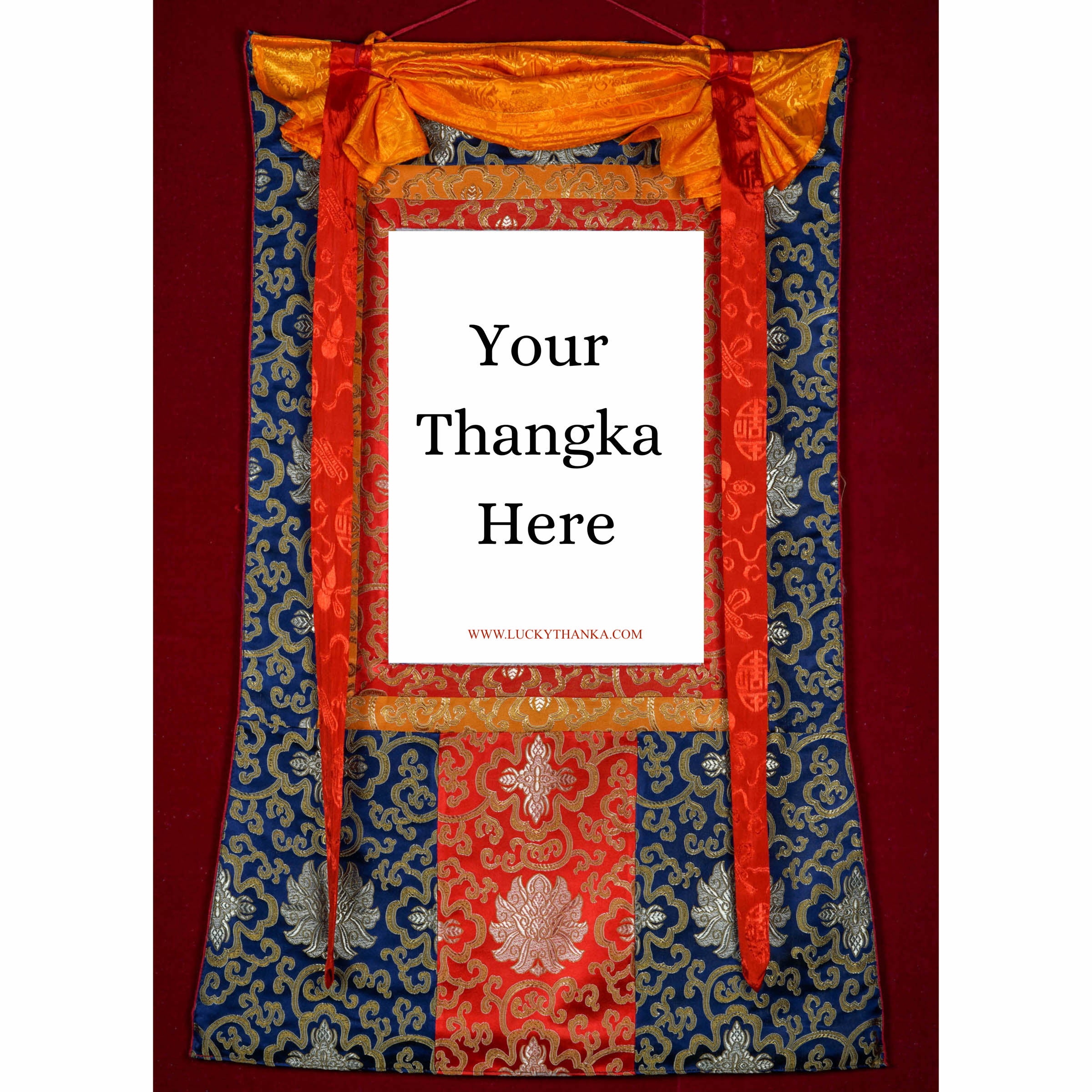
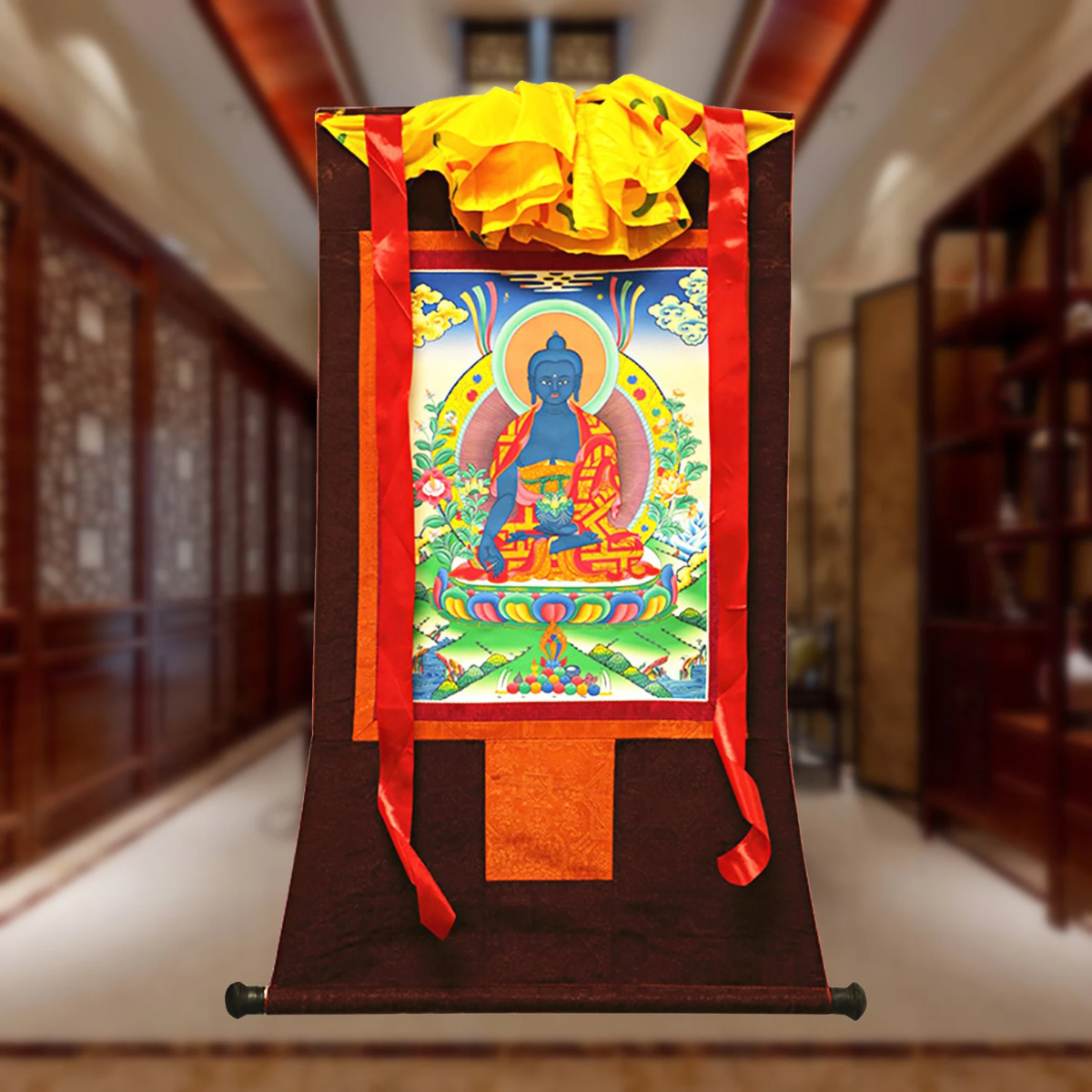
Hand Embroidery Brocade
Want to add a Brocade to your beautiful Thangka Painting? Traditional Style Brocade has been one of the most popular form of mounting as it has a greater religious merit.
Note: Make sure you have added the Thangka to your cart first.
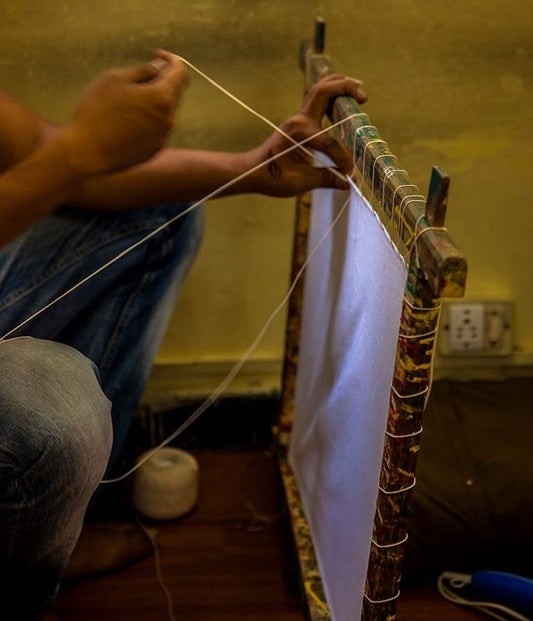
100% Cotton Canvas
Preparing the Cotton canvas before starting to paint a Thangka. This process includes washing, drying, stretching, sizing and everything needed to make a perfect base for the thangka to last for centuries.
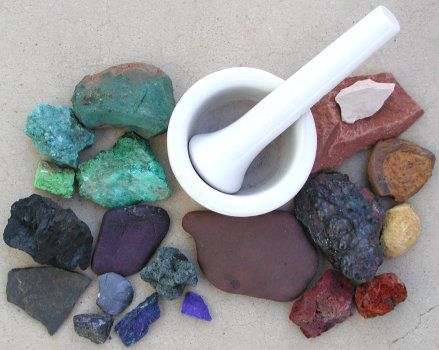
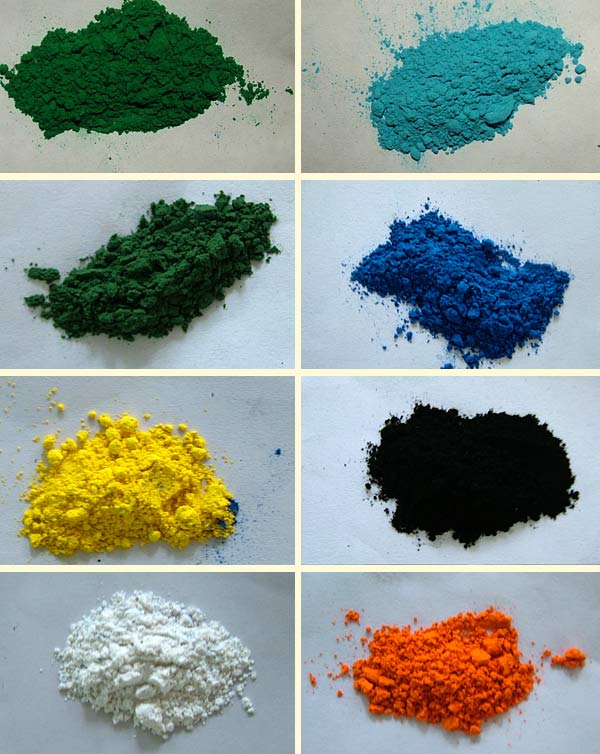
Natural Minerals
Thangka Paintings are painted using the natural minerals. These are firstly grind into the powder form and then used in the thangka as a paint.




